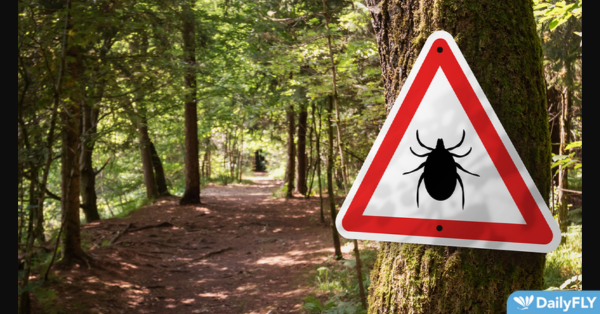PULLMAN, Wash. — Tick season is here, along with the increased danger of Lyme disease, and it turns out the tiny arachnids are even tougher than scientists previously thought.
A recent study in Ecological Monographs shows blacklegged ticks (Ixodes scapularis) are actually really good at surviving extreme cold and heat in nature. Previous lab research suggests that even short periods of especially warm or cold conditions should easily kill ticks, but the Washington State University-led analysis reveals this is only the case for larval ticks in the environment. Instead, nymph and adult ticks weather the hot and cold times with little impact, dying when they apparently run out of energy. The findings could ultimately provide valuable insights into the spread of Lyme disease and other vector-borne pathogens.
“We thought we would see some evidence that if there was like a very dry period, all the ticks might be at a greater risk of dying,” said Jesse Brunner, lead author of the study and an associate professor of biological sciences at WSU. “However, just the larvae were impacted by heat and dry conditions. Cold weather had even less of an impact. Somehow, they hunker down and survive great.”
Blacklegged ticks are notorious carriers of pathogens responsible for various diseases, including Lyme disease, which is the most common vector-borne illness in North America. Over the years, these ticks have expanded their range significantly across the Eastern United States and Midwest, challenging previous assumptions about their preferred habitats. While one of the culprits is likely climate change, scientists have yet to clearly establish why ticks are abundant in some areas while rare in others.
To address the knowledge gap, the U.S. Department of Defense provided funding to Brunner and a team of collaborators from the Cary Institute of Ecosystem Studies to set up an unprecedently large field study at three military bases located across the U.S. East Coast. By placing more than 9,000 ticks in soil core enclosures and monitoring their survival and development over a three-year period, the researchers were able to collect valuable data on the ticks’ response to climatic conditions.
Their work suggests that while extreme weather conditions don’t seem to have as much of an effect on tick mortality as previously thought, it does make them burn through their food faster. This means that hotter weather could shorten the window of time for ticks to find a host walking by to feed on. This was especially true in the case of tick larvae. The researchers found their median survival times were almost cut in half when exposed to frequent periods of hot and dry weather.
The researchers also found something else seemed to be happening on a small scale that was killing ticks. Soil core enclosures located just a few meters apart from each other often had surprisingly different rates of tick mortality.
In one container the researchers would find 80% of the ticks had survived and in another right next to it none of the ticks had survived. The cause of these significant variations in tick survival is unclear, but the study’s findings suggest the influence of environmental factors such as arthropods or fungi.
The implications of the research are far-reaching, considering the public health impact of tickborne diseases. The study’s findings emphasize the importance of targeting interventions during the larvae stage, when ticks are the most vulnerable. By focusing on this stage of development, researchers hope to develop effective strategies, such as vaccinating host species to resist ticks, that can significantly reduce tick populations and mitigate the risk of disease transmission.
Moving forward, the research team plans to investigate the factors leading to localized tick mortality and delve deeper into the role host species, such as mice, deer and yes, humans, play in tick survival.
“The ultimate goal is to develop a comprehensive framework that can predict and effectively manage tick populations,” Brunner said. “This could in turn lead to improved public health outcomes.”







































